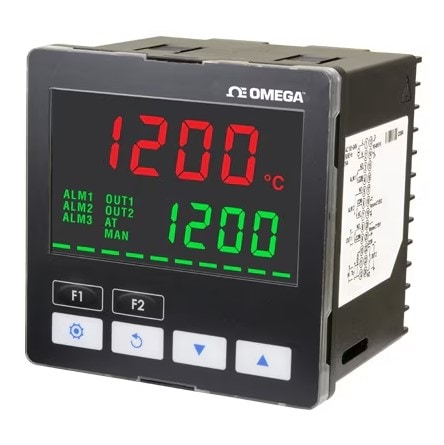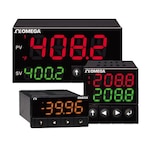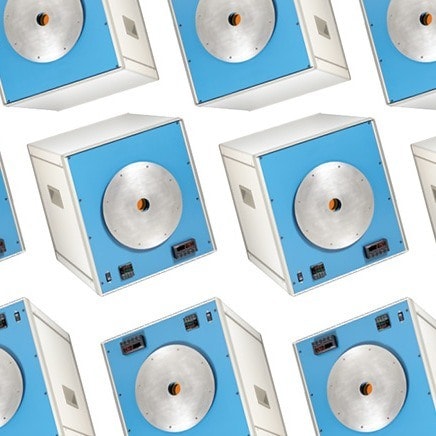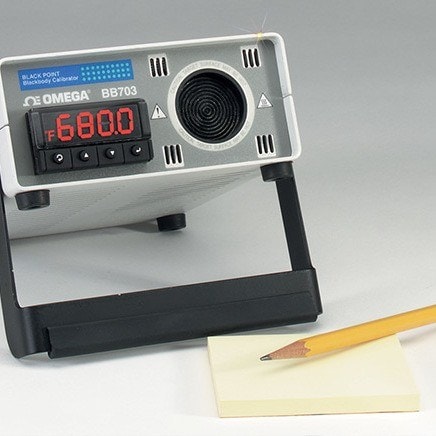A PID controller is an instrument used to maintain a process variable, such as temperature, flow, pressure, or speed, at a desired setpoint.
- P — Proportional
- I — Integral
- D — Derivative
By utilizing these three elements, PID controllers continuously measure the difference between the setpoint and the actual value, adjusting output to minimize that difference. Because they adapt so easily to different processes, these devices are integral to operations across many industries. They can seamlessly switch between maintaining tight temperature control in a pharmaceutical reactor, regulating air flow in an HVAC system, or adjusting feed rates in a packaging line — all while minimizing fluctuations and ensuring product quality.
How PID Controllers Work
A PID controller constantly measures a process variable—such as temperature, pressure, or flow—and compares it to the desired setpoint. It then calculates how much correction is needed and adjusts its output to bring the process back on target. What makes a PID controller especially powerful is how it combines three control strategies into one seamless response:
Proportional (P)
This component reacts directly to the current error. The larger the difference between the setpoint and the actual value, the stronger the corrective action. However, proportional control alone often leaves a small “offset” where the process stabilizes just shy of the setpoint.
Integral (I)
To remove this residual offset, the integral term adds up the error over time. It keeps track of how long and how far the process has strayed from the setpoint, steadily nudging the output until the accumulated error is eliminated. This helps ensure the process eventually settles exactly at the desired point.
Derivative (D)
The derivative term acts as a predictor. It monitors how quickly the error is changing—whether the process variable is climbing or dropping—and dampens the response to prevent overshooting the setpoint. By anticipating where the process is heading, it smooths out rapid shifts and reduces oscillations.While simpler control methods like on/off or proportional-only systems still have their place in industry, PID controllers remain the standard for processes that demand stable, precise regulation. By bringing proportional, integral, and derivative actions together, they deliver consistent performance across a wide range of operating conditions — ensuring the process reaches its setpoint quickly and maintains steady control.
Why Tuning Matters (and How It’s Done)
A PID controller is only as effective as its tuning. As each process is unique—whether it’s controlling temperature in a curing oven, managing flow in a water treatment plant, or stabilizing pressure in a gas line—the proportional, integral, and derivative gains must be adjusted to match the specific dynamics of the system.
Proper tuning balances three goals:
- Minimizing overshoot: Preventing the process from swinging past the setpoint
- Reducing settling time: Allowing the process to reach and stabilize at the setpoint quickly
- Maintaining stability:Avoiding oscillations or hunting around the setpoint
In many industrial settings, tuning is done through a mix of engineering experience and iterative testing. Technicians often start with conservative values, then adjust parameters incrementally while observing how the system responds to changes or disturbances.
Automated tuning features in modern controllers can also provide a starting point, but fine-tuning by skilled personnel is usually necessary for critical processes.
When a PID controller is well tuned, it handles changes smoothly, correcting errors quickly without introducing new instability. This kind of reliable control is critical for keeping product quality high, minimizing waste, and preventing unnecessary wear on equipment.
Applications
PID controllers play a key role whenever precise, stable process control is critical. Featuring autotune, these devices make precise adjustments that keep processes performing at their best.
Some typical applications include:
- Temperature control: Maintaining consistent heat in ovens, furnaces, extruders, or chemical reactors
- Pressure regulation: Keeping pipeline or vessel pressures within tight limits in oil & gas, food processing, and pharmaceutical operations
- Flow control: Managing the rate of liquids or gases through pumps and valves to meet exact production requirements
- Level controlStabilizing liquid levels in tanks to prevent overflow or starvation
- Speed and motion controlRegulating motor speeds or conveyor lines to ensure synchronized production
In each of these examples, a PID controller continuously measures the process variable and adjusts the control output to keep the system operating at the desired setpoint. By compensating for load changes, environmental influences, and system nonlinearities, PID controllers help manufacturers maintain quality standards, improve efficiency, and protect critical assets.
Featured PID Controllers from DwyerOmega for Industrial Applications
Whether you’re managing temperature in a critical manufacturing process, stabilizing pressure in a pipeline, or maintaining precise flow rates, DwyerOmega’s PID controllers are engineered to deliver the stable, accurate control that modern operations demand. These controllers efficiently regulate temperature, pressure, flow, and other critical process variables across industrial, commercial, and laboratory environments. Featuring autotune PID control, they make precise adjustments that optimize stability, protect equipment, and help maintain consistent product quality.
CND3-Series PID Controllers
The CND3-Series PID Controller offers versatile, high-performance control in compact formats—available in 1/16, 1/8, and 1/4 DIN sizes. Designed for universal input (thermocouples, RTDs, voltage, mA), these controllers adapt seamlessly to a wide range of temperature and process control applications.
Key Features:
- Self‑tuning PID + Fuzzy Logic: Automatically adjusts control loop settings for fast, stable response with minimal overshoot
- Fast Sampling (0.1 s): Responds quickly to process changes—even for high-speed or dynamic systems
- Ramp‑&‑Soak Programming: Ideal for thermal profiles in curing, baking, or chemical processes
- Heater Break Detection: Alerts users to open heater circuit conditions to prevent production downtime
- Rugged, Certified Construction:UL/cUL listed, IP66 front panel, and resistant to vibration and shock—built to perform in harsh environments
- Flexible Power & Outputs: Accommodates 80–260 VAC or 24 VAC/DC power, with customizable relay, analog voltage/current, or pulse outputs
Why It Matters:
This controller combines precision, durability, and configurability in a small footprint. Whether you're regulating ovens in food production, managing pressure and flow in industrial lines, or automating lab equipment, the CND3 delivers stable, repeatable results.
CN400-Series PID Controllers – NFC‑Enabled Precision in 1/16 DIN
The CN400-Series PID Controller delivers advanced PID control in a compact 1/16 DIN package, ideal for both industrial and lab environments. It supports single or dual universal inputs—with dual outputs in select models—enabling flexible single- or dual-loop control directly from one device.
Key Features:
- NFC/RFID Programming via Android App: Configure or update all settings wirelessly through Omega’s DirectLink App, eliminating the need for physical connections or cables
- Ultra‑Fast Sampling: Programmable sampling rates up to 470 Hz (≈2.1 ms), ensuring the controller reacts swiftly to process changes
- Dual-Loop Control: Models with two inputs and outputs can handle separate heating/cooling loops or perform mathematical functions between signals
- Broad Input/Output Options: Universal signal inputs (thermocouple, RTD, voltage, current), RS485 Modbus connectivity, and configurable relays, SSRs, and retransmission outputs
- Robust Build: Galvanic isolation up to 2.5 kV, IP65 front panel, password protection, and wide AC/DC power range (24–230 V) for varied installation environments
Why It Matters:
With its combination of high-speed sampling, wireless configuration, and dual-loop flexibility, the CN400-Series is tailored for modern processes that demand quick response, minimal downtime, and versatile deployment.
Connect with a DwyerOmega Expert Today!




